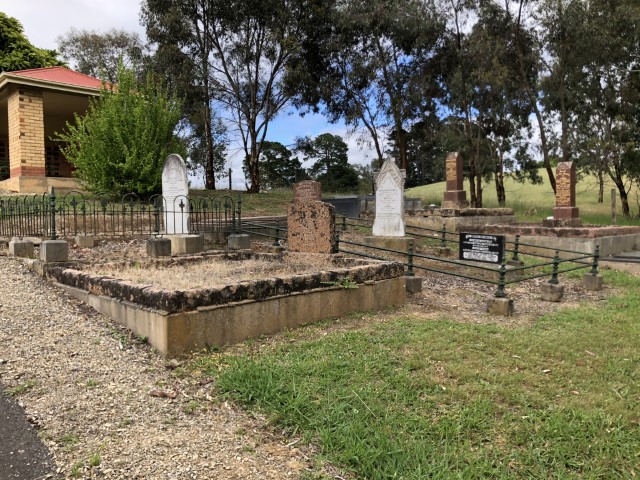Bonney’s Flat Cemetery
Bonney’s Flat Cemetery was established in the 1860’s as part of the Bonney’s Flat Primitive Methodist Church which served the district until 1931 when a larger property was built in Balhannah township. This was after the formation of the Australian Methodist Church in 1901.
The cemetery is managed and maintained by a team of people from the Balhannah Uniting Church and wider community to provide a useful and quiet place for people to place the remains of their families to rest.
Bonney’s Flat Church
(from the panels display in the columbarium)
In the early days, a congregation of Primitive Methodists met in each other’s homes and sometimes under two big gum trees in Bonney’s Flat at the entrance to what became the Balhannah gold mine property (about one kilometre towards Adelaide from this cemetery)
In 1859 a committee was formed to organise the building of a church for Bonney’s Flat. John Camac sold them the corner section 4046 nearest Balhannah for eight pounds, on condition that a chapel and a school be built there.
Thomas and James, sons of John Camac. Worked on the building. Thomas was superintendent of the Sunday School for fifty-three years and James was a a teacher until his death in 191’
The Bonney’s Flat church was in use until 1931 when a new Methodist church to seat one hundred and fourteen was built at the present Uniting Church site at Balhannah, on land given by William Johncock

On 2 January 1955 the Adelaide Hills area was ravaged by bushfires. The old Bonney’s Flat church was a victim. ‘The Advertiser’ of 3 January 1955 gave the following account:
“With a temperature of 109 F (42.8 C) and a searing north wind, SA yesterday suffered its most damaging bushfires.
In the hills, the fires raged over an area of about 600 square miles of cultivated and bush land. Properties destroyed included Marble Hill, the Governor’s summer residence. His Excellency and Lady George and their family and personal staff barely escaped with their lives.
At least 40 houses in the hills districts and 10 at Rendelsham in the South-East were destroyed and hundreds of properties suffered damage.
There was one fatality.
Drizzle began to fall at 8.15 pm and 30 minutes later turned to a drumming downpour. Weary, soot stained firefighters cheered wildly and many lay down in the ashes which slowly turned to mud.”
Stone was recovered from the old church building in 1956 and used to build the entrance pillars for the cemetery.






